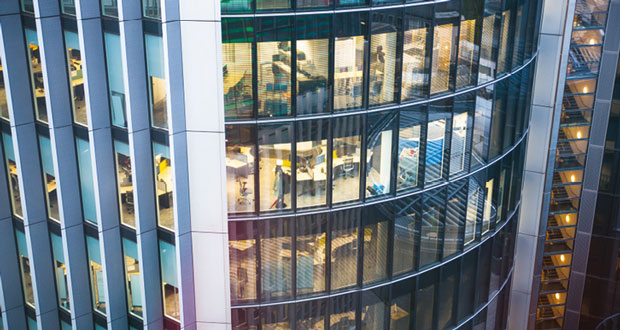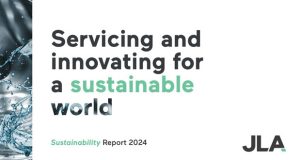 Simon Eastlake, Managing Director, Office Space in Town (OSiT) on how landlords that adapt to the triple whammy of rising interest rates, hybrid working and the net zero challenges can still keep their tenants happy
Simon Eastlake, Managing Director, Office Space in Town (OSiT) on how landlords that adapt to the triple whammy of rising interest rates, hybrid working and the net zero challenges can still keep their tenants happy
A rising interest rate cycle, hybrid working and a move towards greener buildings all point to challenging times ahead for commercial property owners, but it will leave resilient organisations well-placed to benefit as the nature of the workplace changes.
For observers of the office market, the unfolding developments are not a surprise. The latent demand for sustainability-focused flexible offices, run with resilience in mind, has been growing for several years. It’s a trend that points to a working environment where office quality, convenience and carbon footprint matter most, both for productivity and attracting staff.
Amid double-digit inflation not seen for decades, interest rates are rising, making borrowing more expensive for debt-reliant buyers and exposing certain property ownership structures to considerable risk. The UK base rate is now 2.25 per cent, having risen from 1.25 per cent in early August, with fixed rate mortgages in the 4.85 per cent – 5.69 per cent range and variable mortgage rates around 3.50 per cent. Rates for small businesses will likely be higher.
Vacant or semi-occupied offices compound those debt-related problems. Add to that the cost of upgrading buildings to meet environment standards and some property businesses could face serious difficulties. It demonstrates the value of a resilient ownership structure that limits such risk exposure.
HYBRID WORKING AND SUSTAINABILITY
Most businesses are now adapting their work policies to accommodate the hybrid work model. This can mean a need for higher quality amenity led spaces, and more broadly for a great office environment that enable employers to attract and retain staff. It means that office providers need to stay abreast of what’s going on.
But remote working isn’t that unusual, in fact in London for example, remote working has always been more prevalent. This is because more people have jobs that allow for it, such as professional services, and information and communications roles, which account for about 22 per cent of jobs in London, compared to 14 per cent across England.
But the Policy Institute and King’s Business School recently showed that while the flexibility of the hybrid work model is valued, so too is the office environment. The sociability and buzz of an office is highly rated. A growing number of companies, including Apple, Freshfields, Citigroup and Google, are requiring staff to return to the office, if not full-time then for 2-3 days a week. It’s worth noting, though, that three quarters of employees believe the hybrid model is here to stay.
What this means is that demand for high-spec flexible offices that facilitate agile, hybrid workstyles is expected to remain robust in the long term. Companies will look for smaller, flexible workspaces that can cater for hot-desking on shorter terms, but while providing attractive amenities. The landlords that provide these services will fare better.
As if the pressure from the rising interest rates and changing office demand patterns was not enough, commercial property owners also need to consider new sustainability standards. These standards may be perceived as a government-induced headache, but there’s market demand for it too.
TACKLING SUSTAINABILITY CHALLENGES
The Environmental Performance Certificate (EPC) rating of a building can directly impact lettings. At present, the legal requirement under the Minimum Energy Efficiency Standard regulations is that a commercial building must have a rating of at least E before a new or renewal lease can be granted. Overall, about 10 per cent of commercial properties do not have an EPC rating of E or above.
The government has made clear that it intends to introduce more ambitious energy efficiency targets. An EPC rating of at least B by 2030 is a strong possibility, with an interim target C-rating by 2027 also likely. Meeting these new EPC standards will be hugely expensive, made worse by the cost of borrowing, meaning that old office buildings may become obsolete. Already, landlords are selling off properties that fail to meet the standards.
However, forward-looking landlords will be on top of the sustainability issues for their properties, investing as needed to correct problems and also adopting processes, such as Service-Enhanced Multi-Occupancy Buildings (SEMOB), to improve energy efficiency and reduce costs.
For tenants, the disruption caused by a property sale or office refit can have a significant financial impact in terms of work interruption. For them, it’s important to check the history of a building before signing a lease to avoid the possibility of eviction or disruption in the future.
In their due diligence, tenants would be wise to consider where SEMOB practices are in place. Offices that adopt SEMOB can unlock greater energy efficiency by managing the heating and lighting for hundreds of workers from a single central system. That’s good for all parties.





